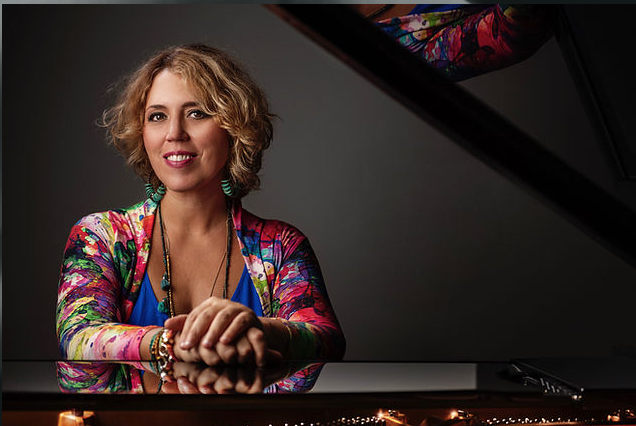Tips on how to compose
CREATION FROM NOTHING
As the Pianist 2023 Composing Competition is in full swing (deadline 5 December!), concert pianist and improviser Gabriela Montero offers her thoughts on how to compose

Although my notated composing portfolio is still quite small (a piano concerto, a piano/orchestral tone poem and a violin/piano piece), I could argue that I have composed thousands of pieces. You see, in my experience, improvising and composing are so closely related that they are almost indistinguishable one from the other. I say this because I want you to consider not only the theoretical processes of notating musical architecture but, long before the first note is written down, where, why, and how the musical idea comes into existence.
To some like myself, a work begins as an experience, conscious or not, that needs to inhabit a musical space in real time. It travels from my head, my heart, my memories, my fears, my hopes, through my ten fingers, the conduits that bring it to life. It's an electric impulse. So, what am I really referring to? Metaphor. Life. Experience. The need to express more than an arbitrary musical motif; the need to express in the present a poetic, human and personal experience through sound.
Before you create the shape, ask yourself how you can manifest in music a particular memory, feeling, idea or mood. Allow it to live in you as a statement that describes you or a situation you are living right now. For me, the process of notating and bringing a musical idea to the page follows that initial contemplative state, in which imagination exists without boundaries. Form permits us to corral that shapeless unknown into a coherent narrative, but it's the spark of inspiration that precedes that formal moment, and what drives us to find musical life within those parameters, that interests me above all. Go to your instrument and, putting aside your inner critic, allow that creative seed to take a hold of you. Record it and listen to it. You will either be moved and curious to see how it can develop, or not. You should experience a visceral reaction, one which will guide you to ask whether within that spontaneous act lies a meaningful statement that is worth pursuing. Now you're ready to begin working on your material.
As pianists, we have the good fortune of working with an instrument that allows for infinite colours and harmonic possibilities. Don't be afraid to explore unconventional harmonies and a wide variety of styles. Don't be afraid to work and develop a piece, only to then discard it. The act of creative exploration will lead to personal discoveries and a more intimate understanding of the relationship between imagination and craft.
Watch Montero play her own Latin Concerto:
Finally, here is a story which might inspire: I have a good friend who is a wonderful, self-taught sculptor. He attended a masterclass one day with an Italian master, working in marble. The class lasted five days. On the first day he was given a large, square block of marble. To the horror of the master, he took up his tools and began chipping away. No drawings, no plans. The master told him he was wasting his time and a valuable piece of stone. But, as the days passed, a beautiful bust began to emerge from the stone, until finally the master had to declare that his student was a genius. He asked my friend, ‘What was your process, if you don't sketch out what you are trying to sculpt?’ My friend replied simply, ‘I just saw her in there, and all I did was set her free!’ Imagination leading craft, working together in perfect harmony. That, to me, is a good way to look at the art of composition.
Find out how to enter the 2023 Composing Competition here
Photo: © Anders Brogaard
